World War II in the drawings of a 21-year-old soldier made in 1944
A 21-year-old American soldier, born into a family of Russian immigrants, got to the European front during World War II. It is thanks to his talent and desire to capture everything he saw that we can find out what the life of a soldier was like 70 years ago.
In 1942, Lundy was 19 years old and studying to be an architect in New York. In 1944, a talented young man goes to war. And all the time he does what he knows best — sketches everything he sees around him: military training at Fort Jackson, forced marches, soldiers on vacation, crossing the Atlantic Ocean, the port of Cherbourg, French settlements and death.
The narrative through the drawings is conducted from May to November 1944, until Lundy is in the hospital after being wounded at the front.
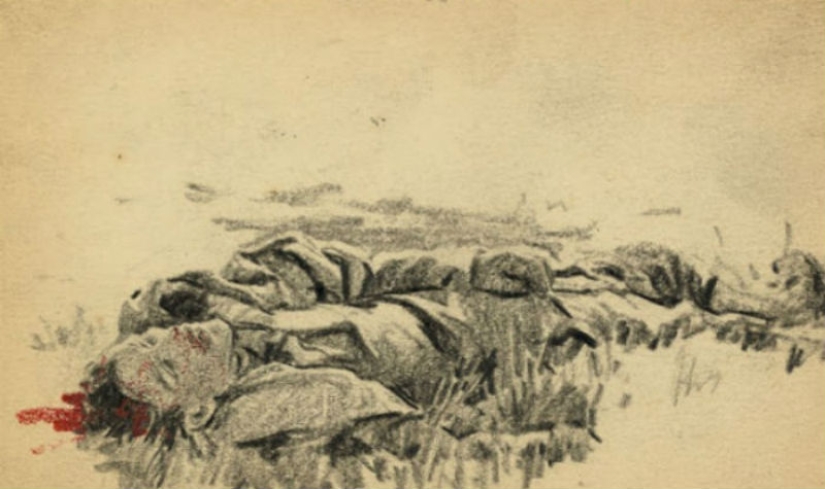
Eight sketchbooks out of twenty have reached us. Each is a small spiral notebook, which must have fit perfectly into the breast pocket. Lundy drew with a Hardtmuth black pencil quickly and clearly. "For me, drawing is synonymous with reflection," the soldier said.
Victor Alfred Lundy was born in 1923 in New York City to a family of Russian immigrants. The mother strongly supported her son's talent for drawing. Lundy first graduated from New York University, and after the war he entered the Harvard School of Design and graduated with a degree in architecture. In 1954, Lundy opened a firm in the Florida city of Sarasota and became one of the leaders of the Sarasota school of Architecture. His most recognized and famous works are the buildings of the Sarasota Chamber of Commerce, the Tax Court and the American Embassy in Sri Lanka.
Victor Lundy donated his archive to the Library of Congress (US National Library), and in 2009 his sketches of the Second World War were published.
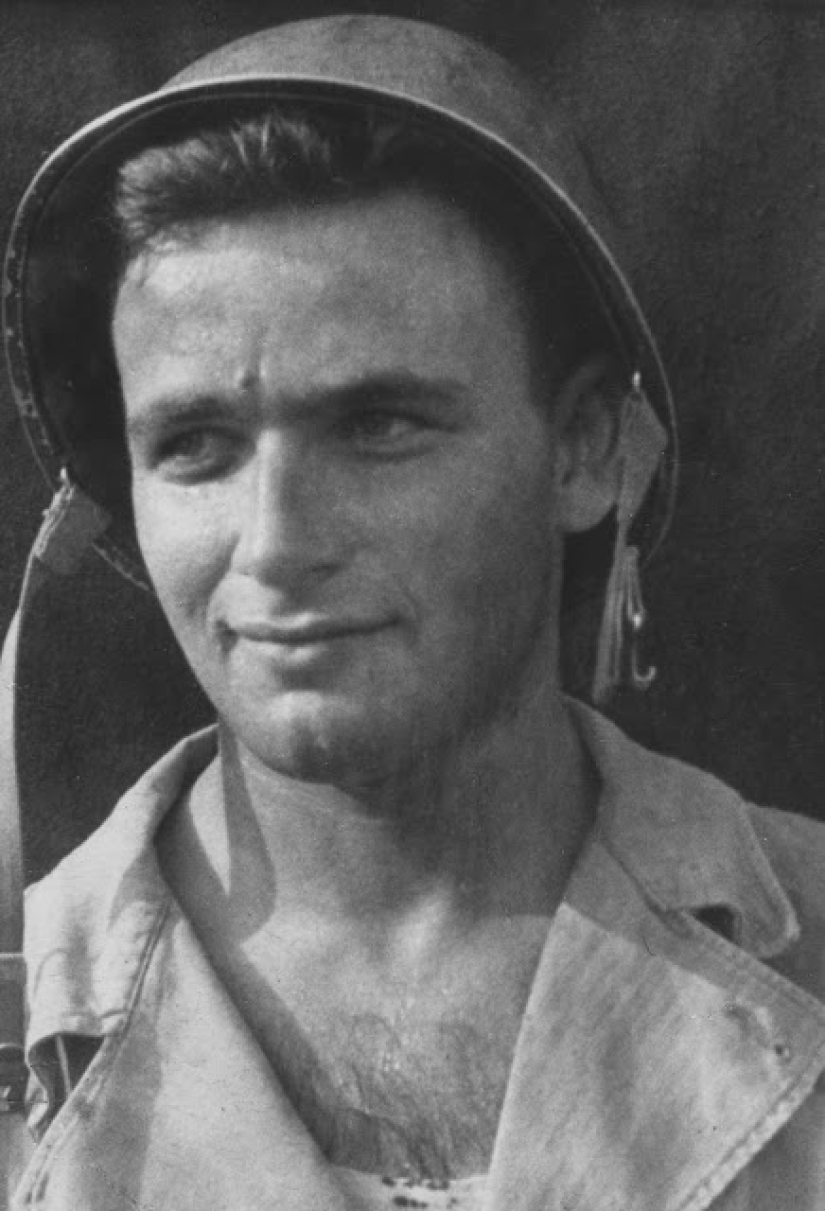
Victor Lundy.
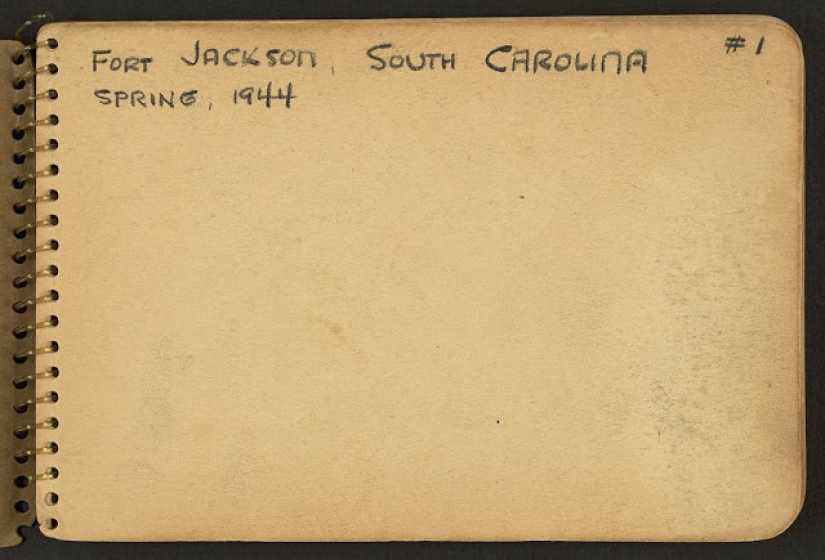
Fort Jackson, South Carolina, spring 1944.
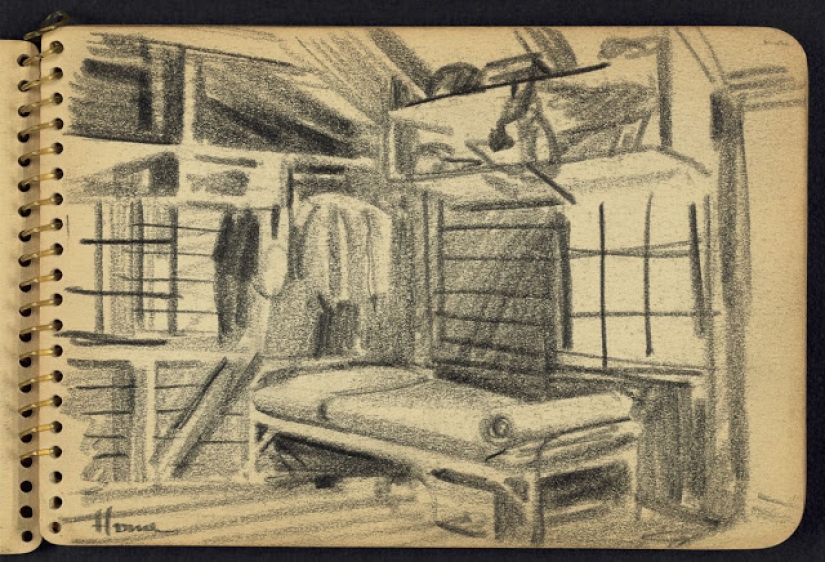
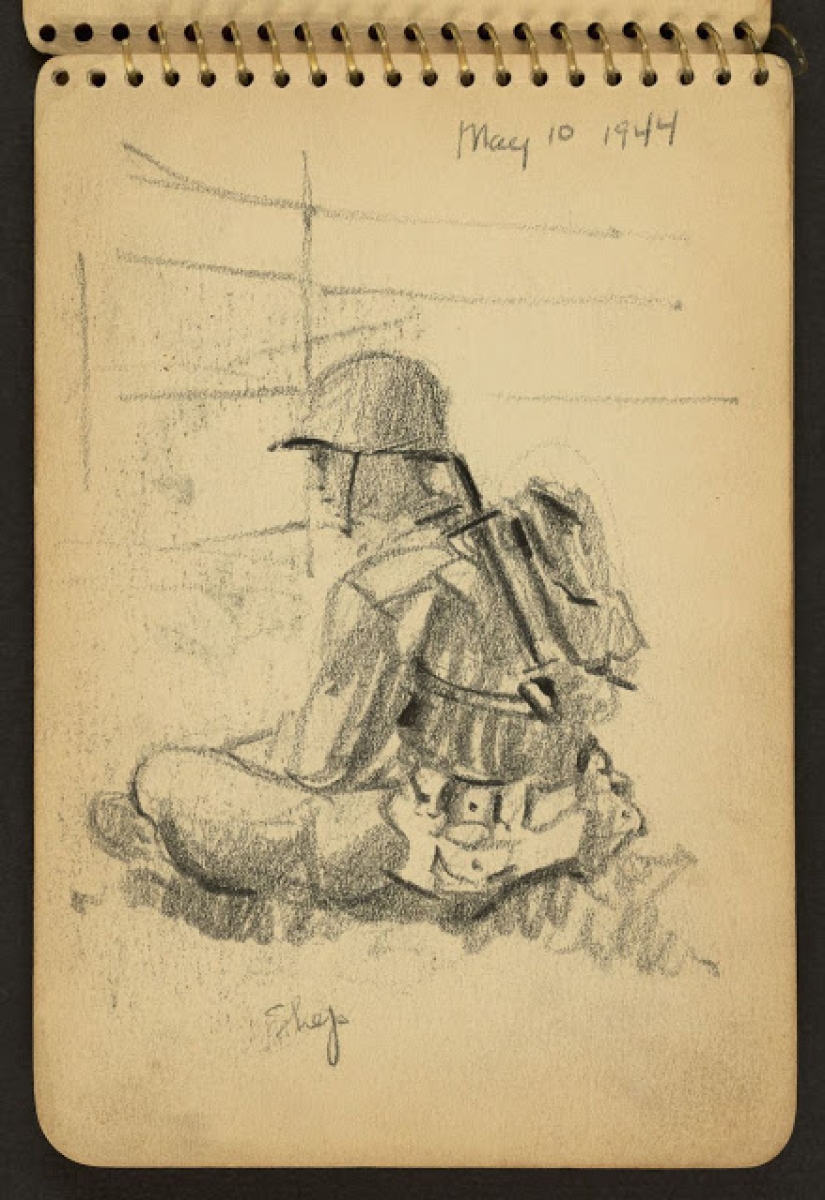
May 10, 1944.
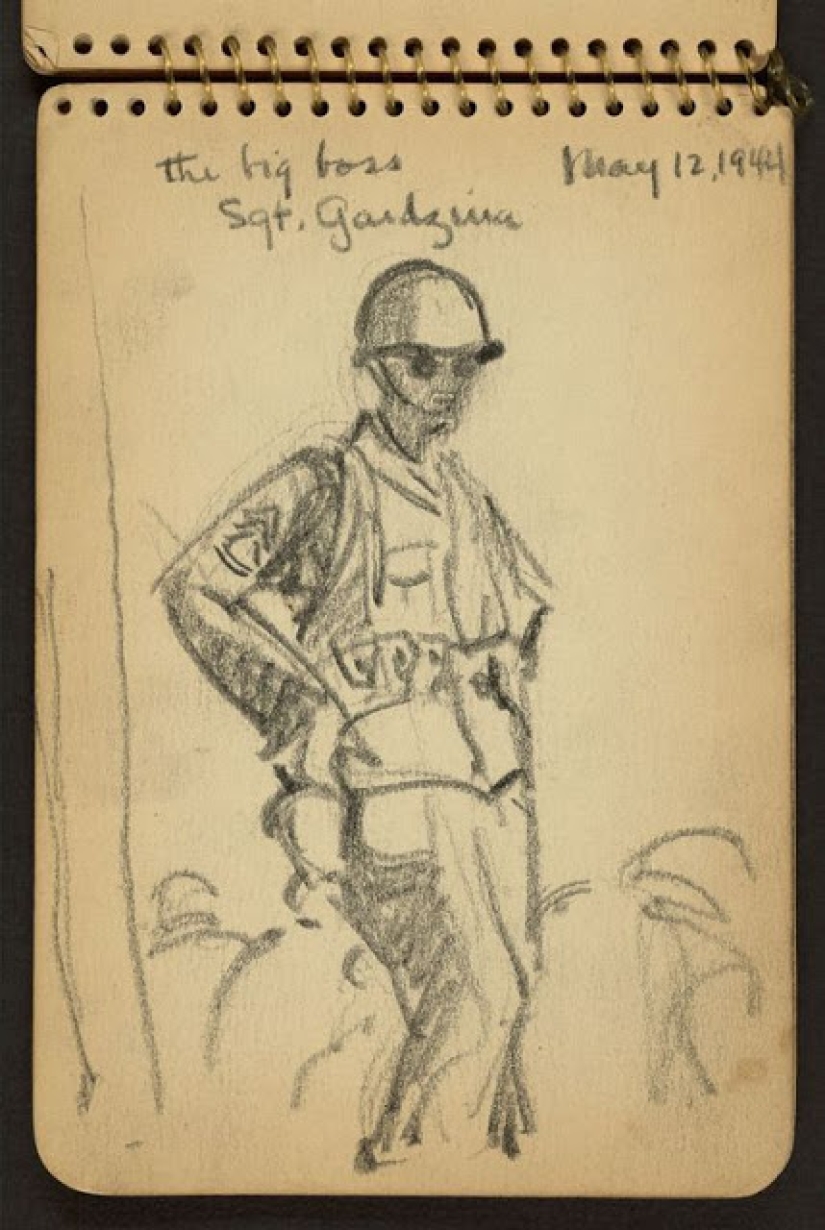
The big boss is a sergeant. May 12, 1944.
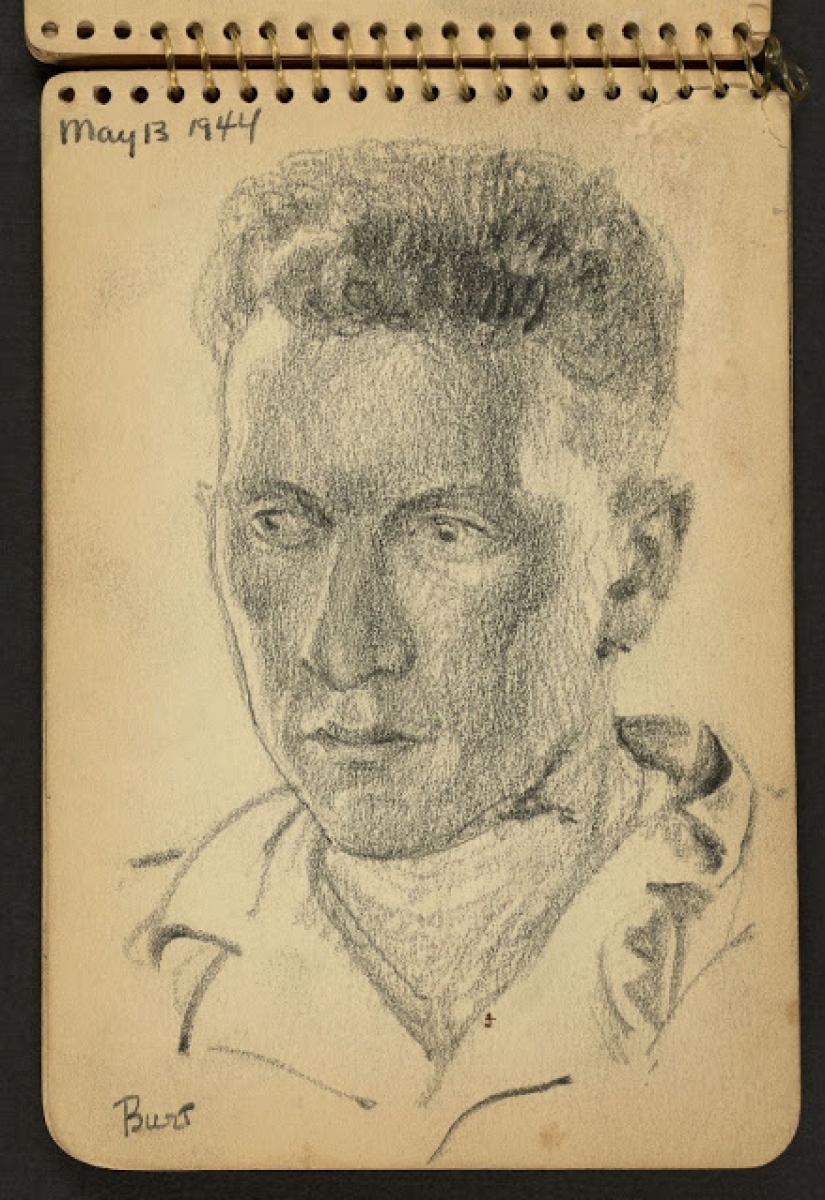
May 13, 1944.
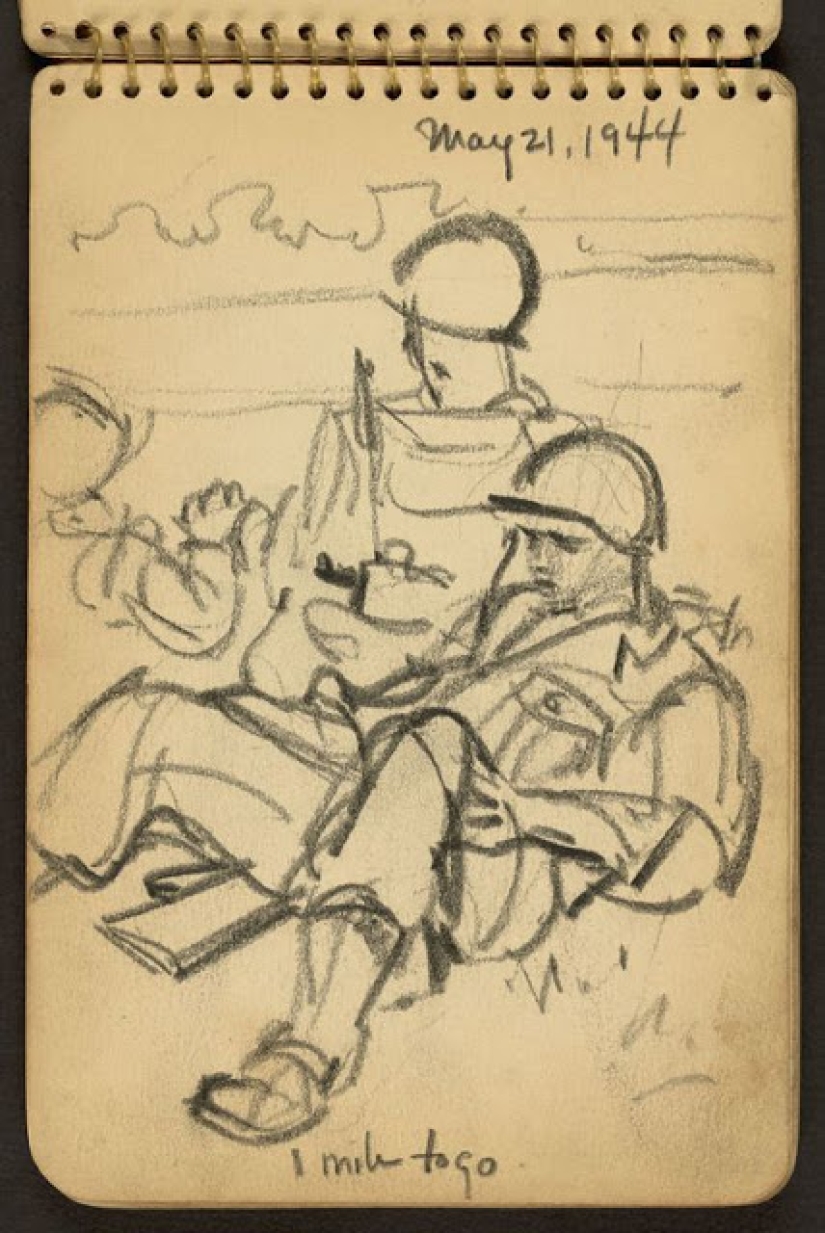
"One mile left." May 21, 1944.

Portrait of a sergeant.
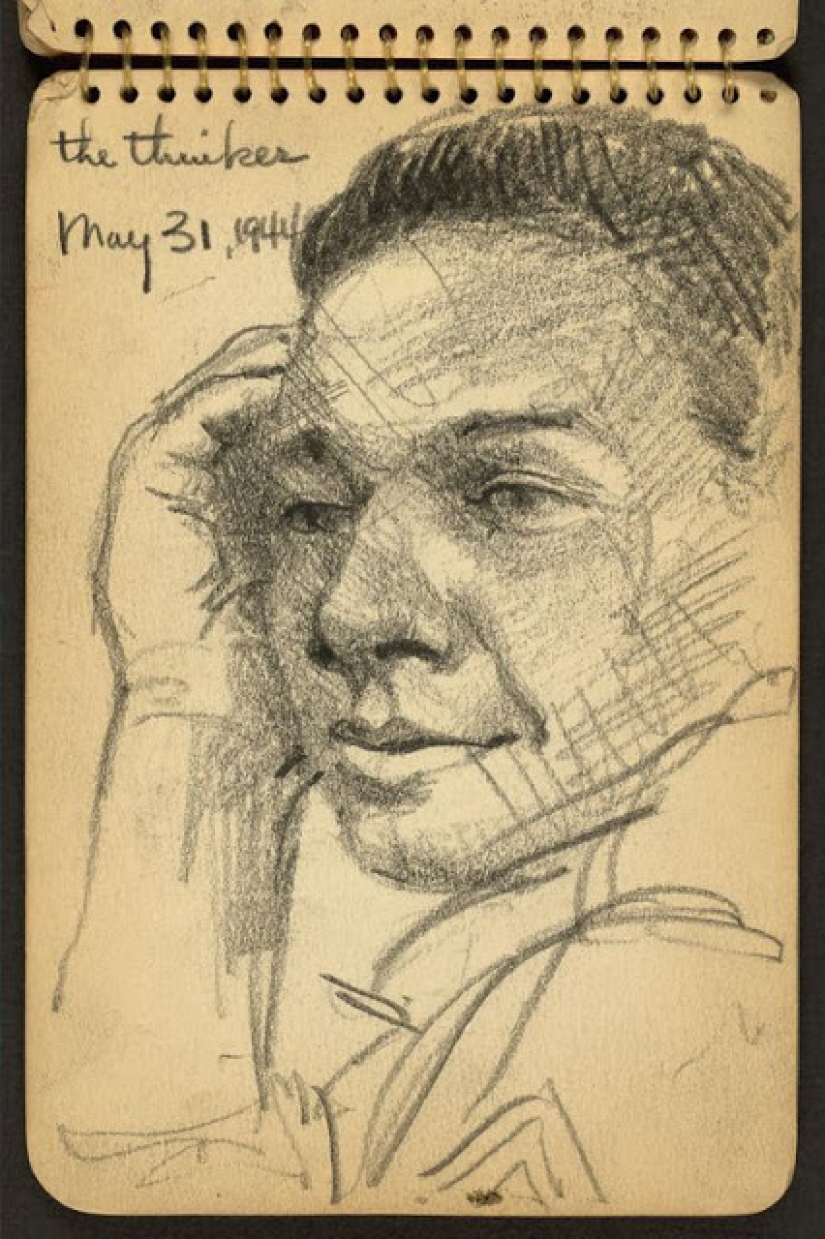
The Thinker.
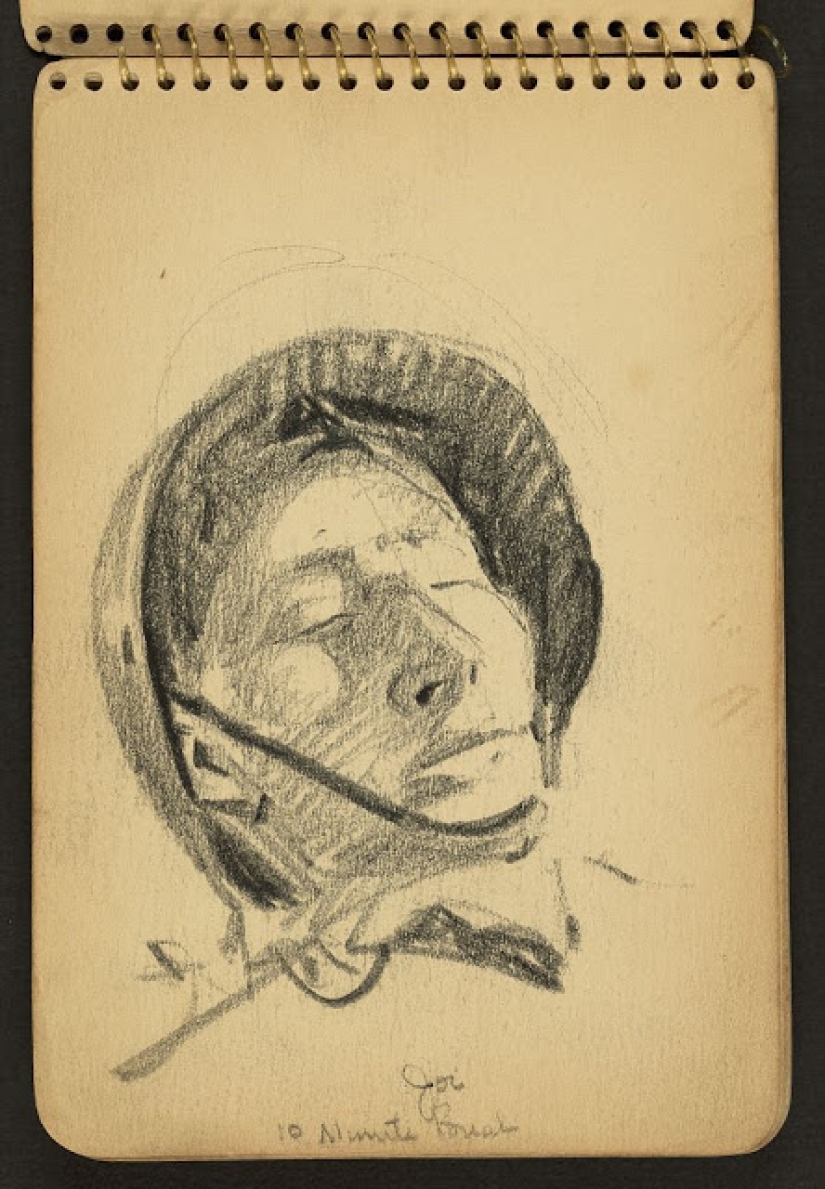
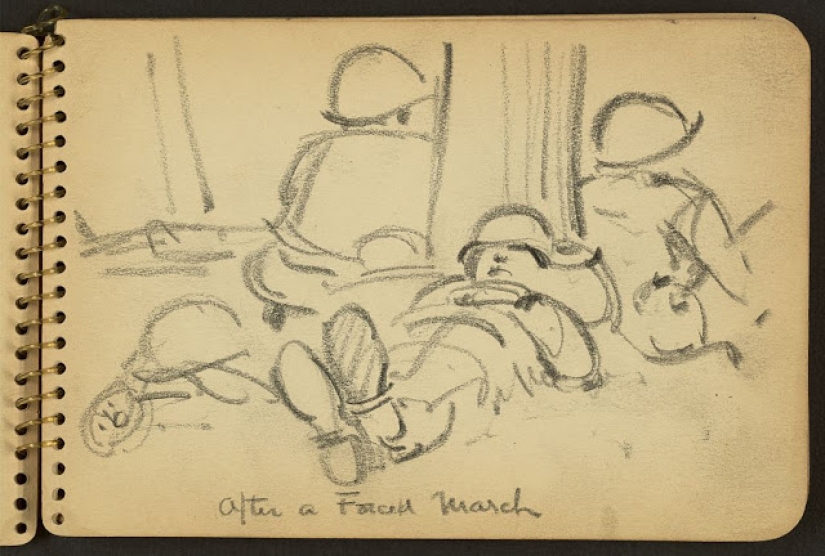
"After the march."
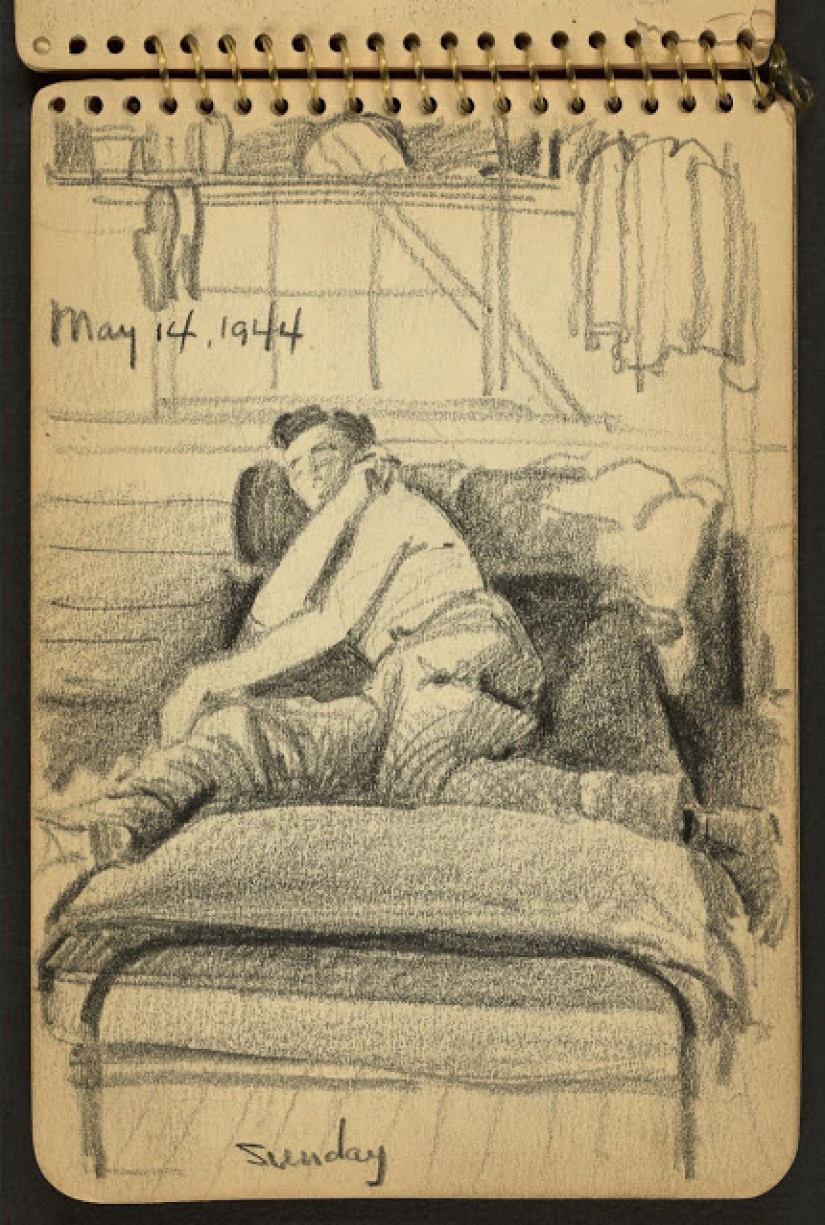
"Sunday."
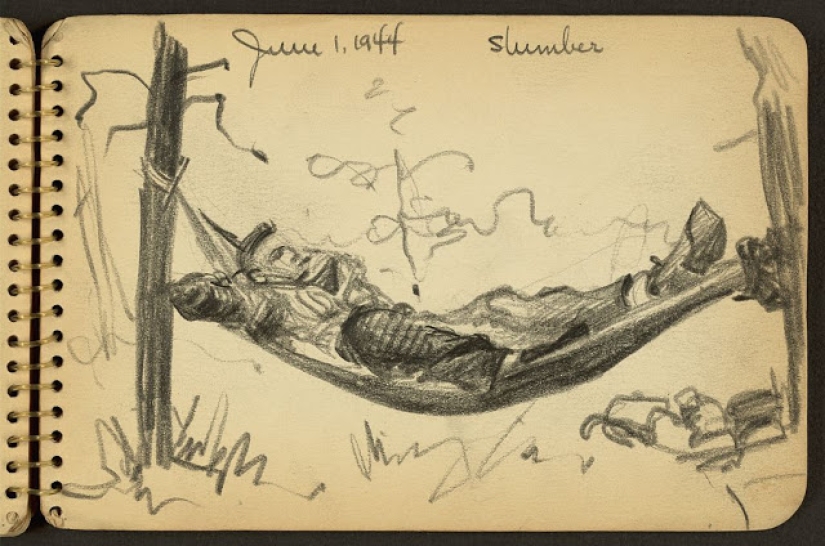
"Nap", June 1944.
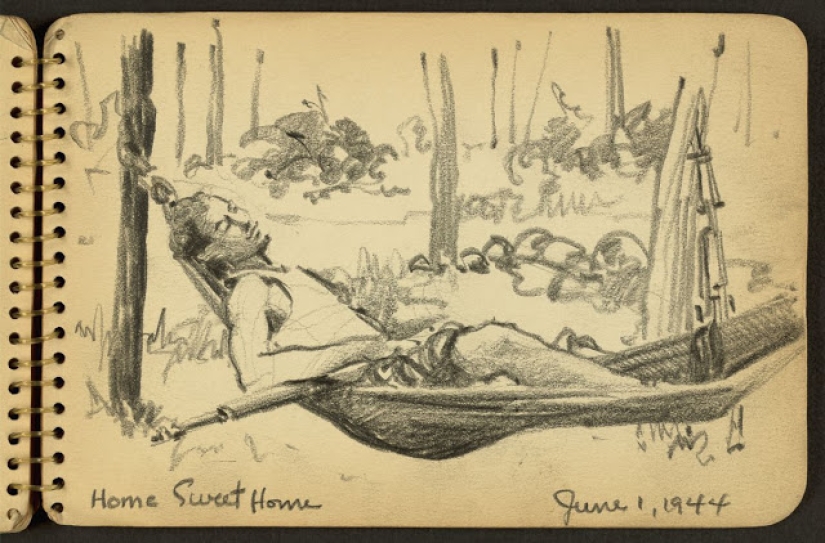
"Home, sweet home."
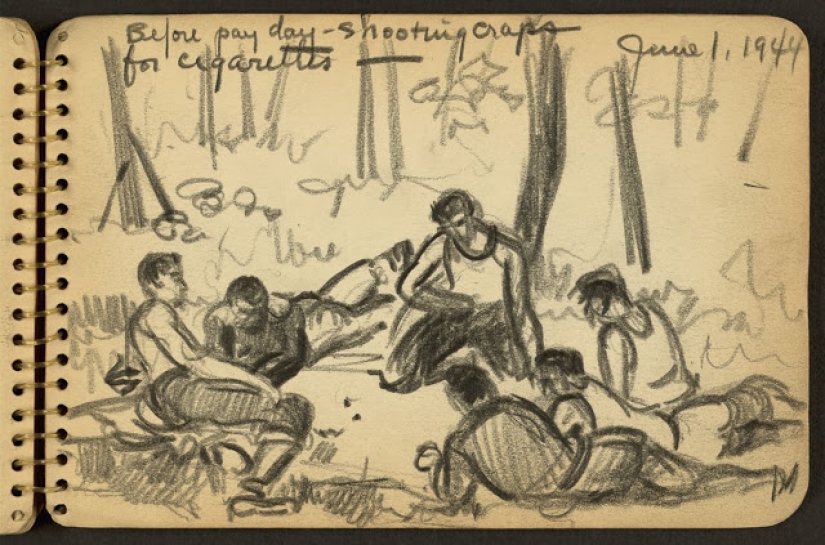
Soldiers are playing dice for cigarettes.
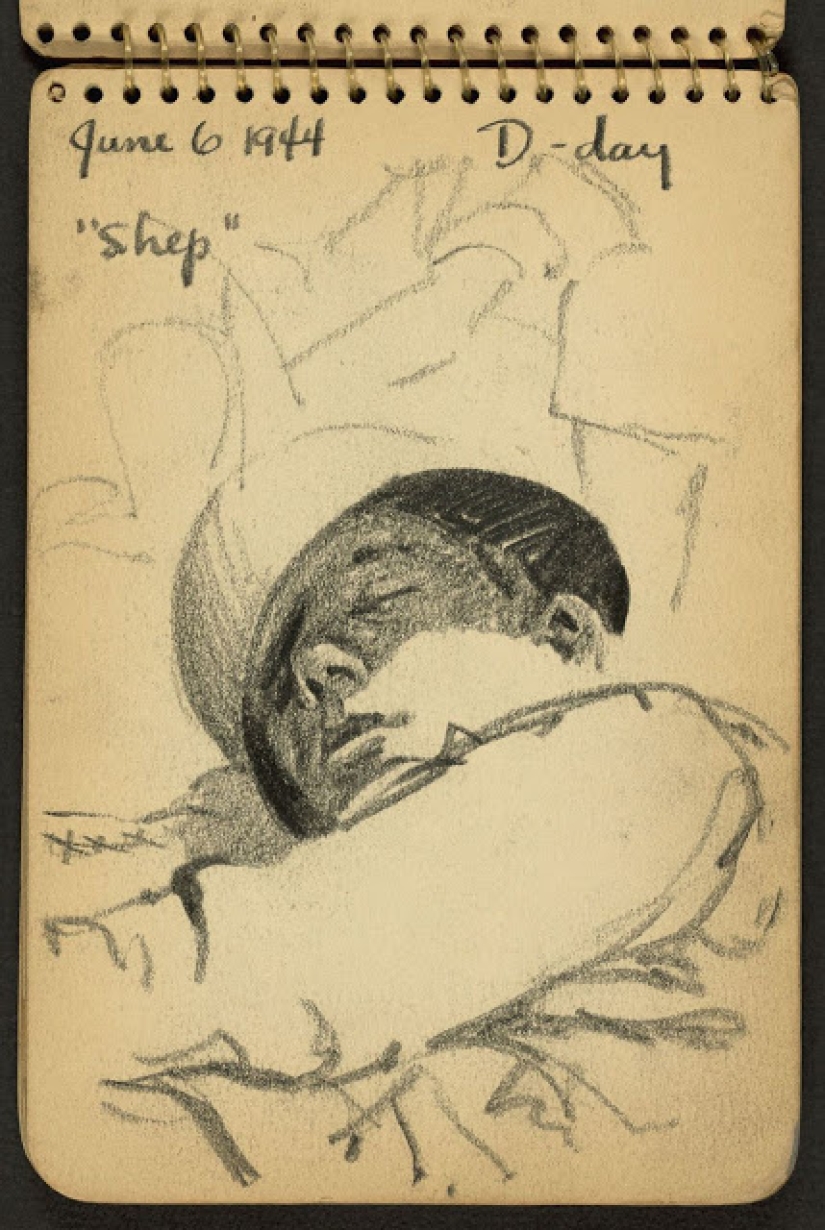
June 6, 1944.

August 25, 1944, on a train.
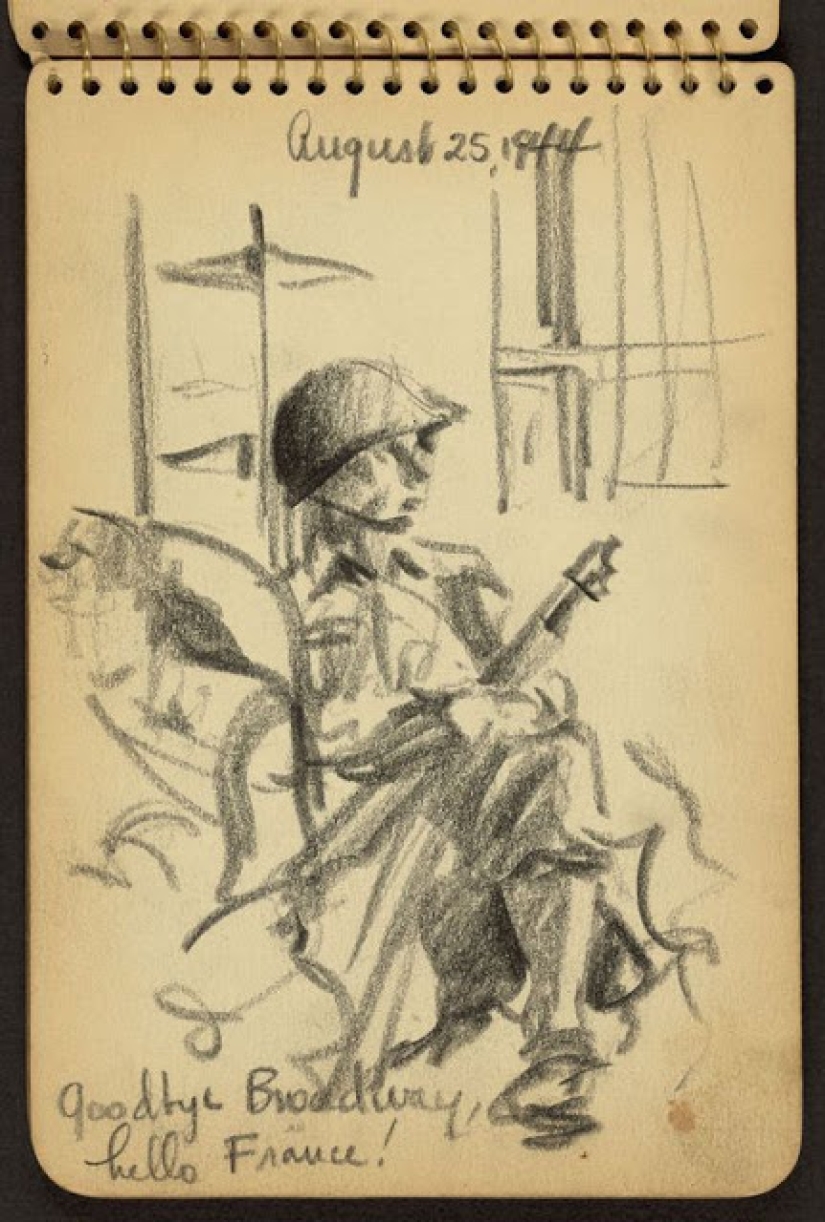
"Goodbye Broadway, hello France."
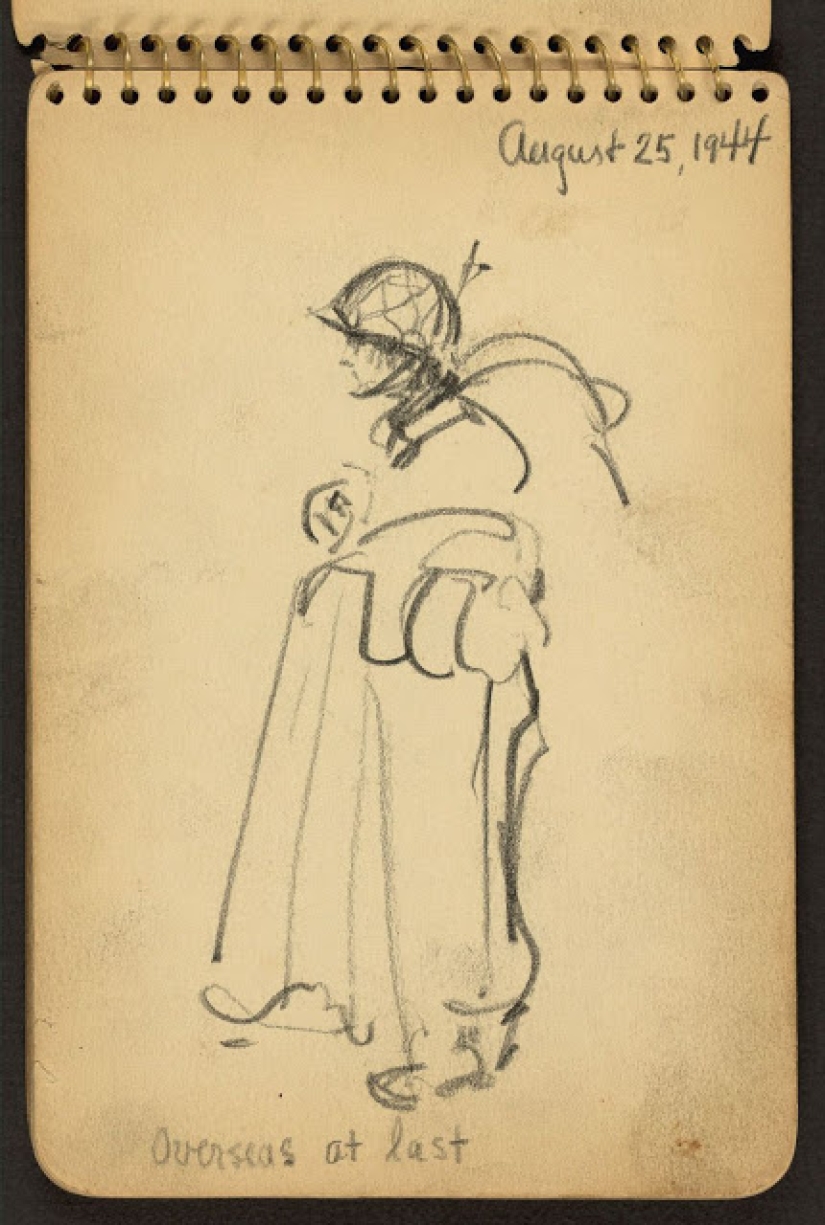
"Finally abroad."
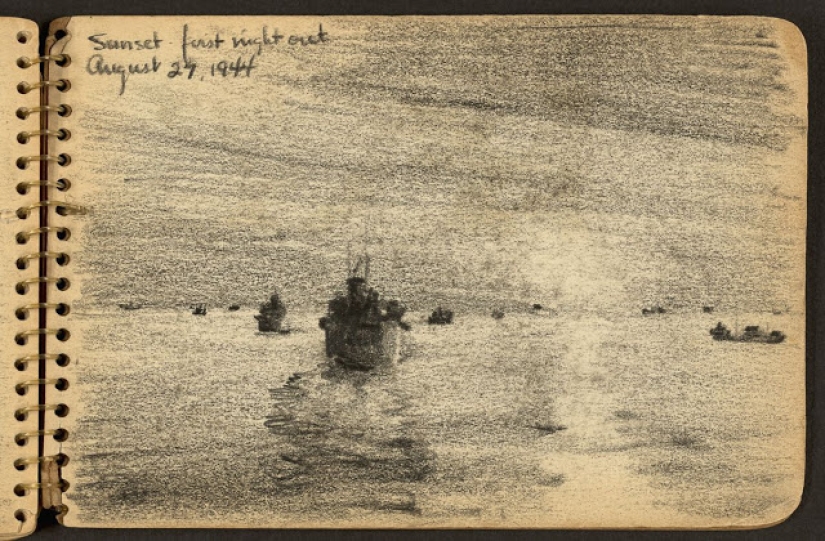
Sunset, August 27, 1944.

Night, August 28, 1944.
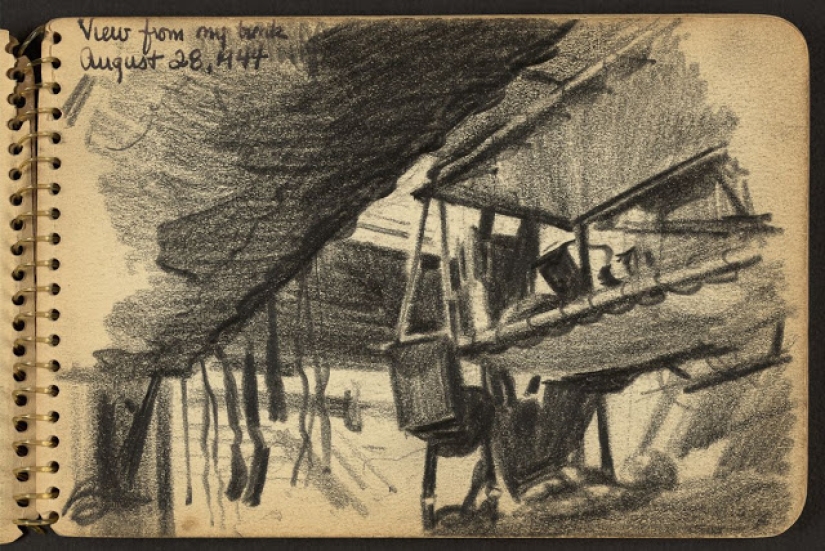
"The view from my seat."
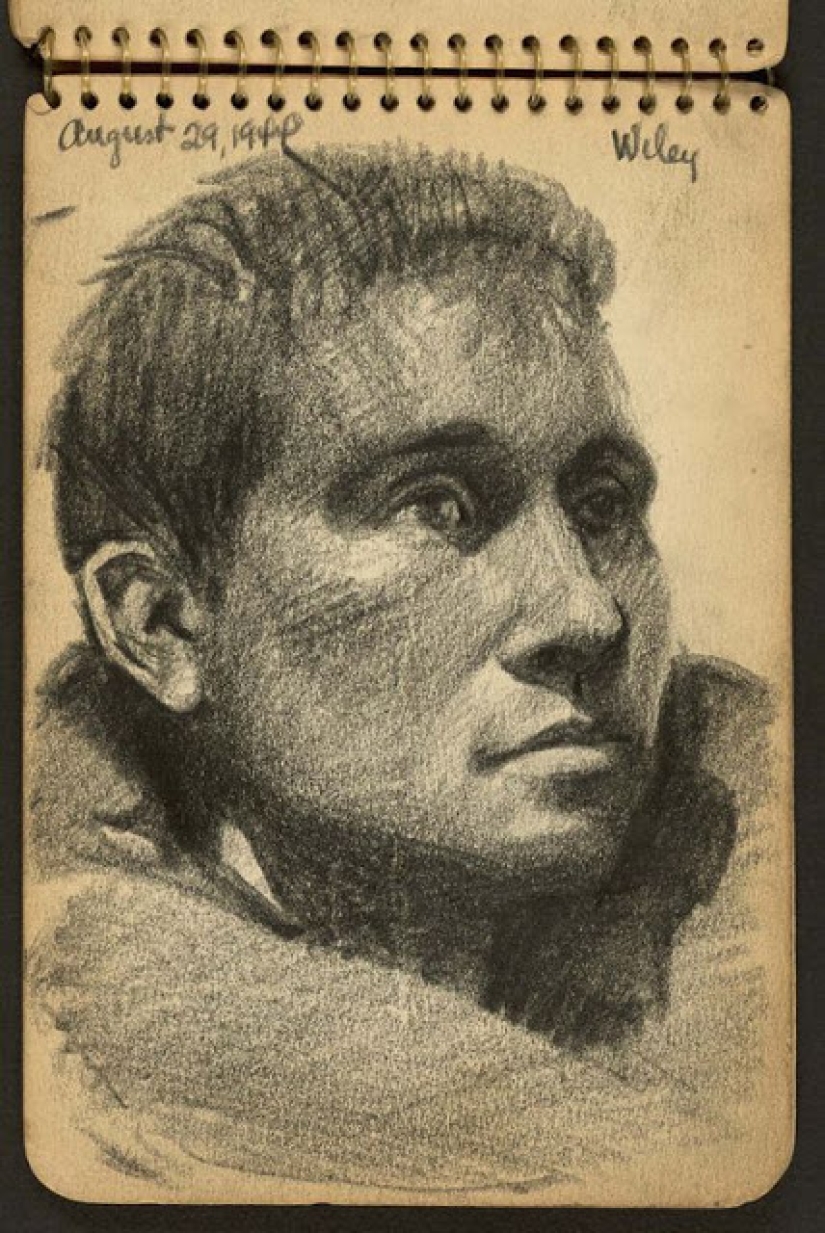
August 29.
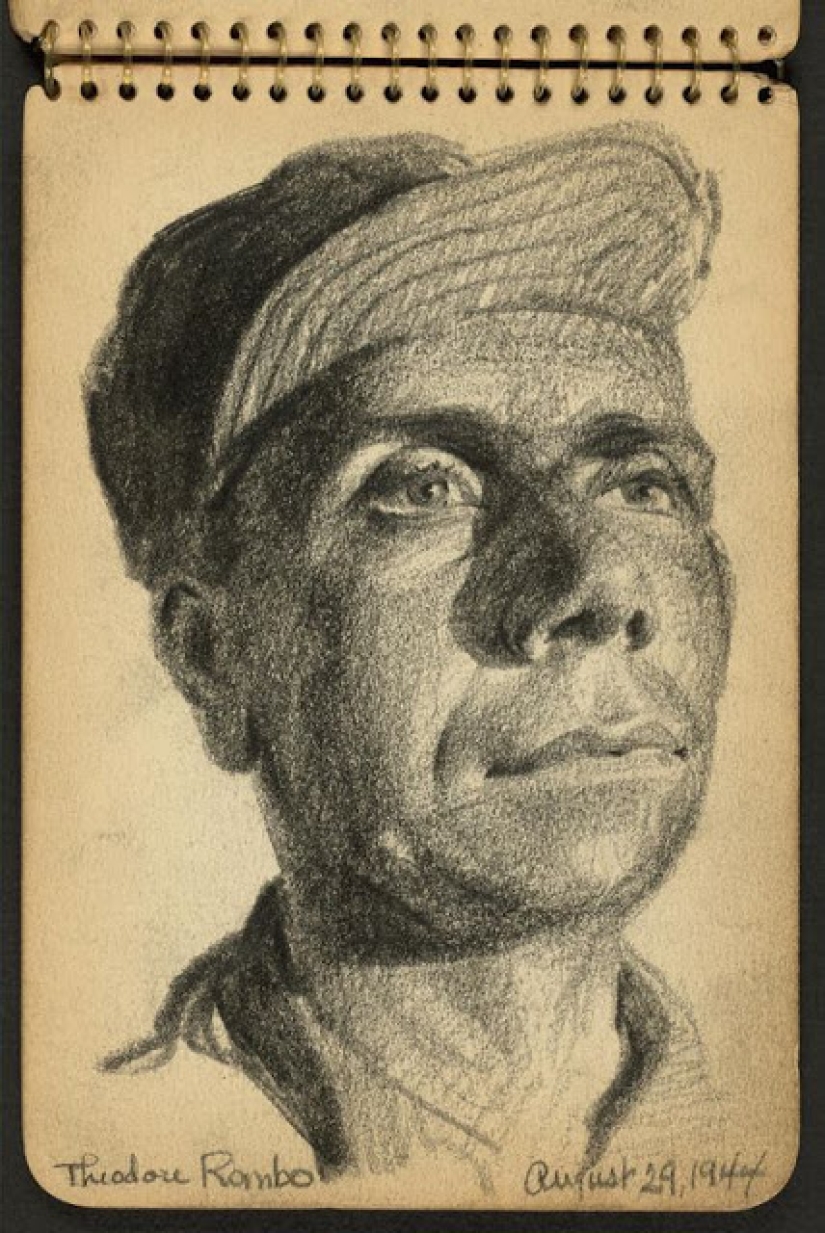
Signed: "Theodore Rombo."
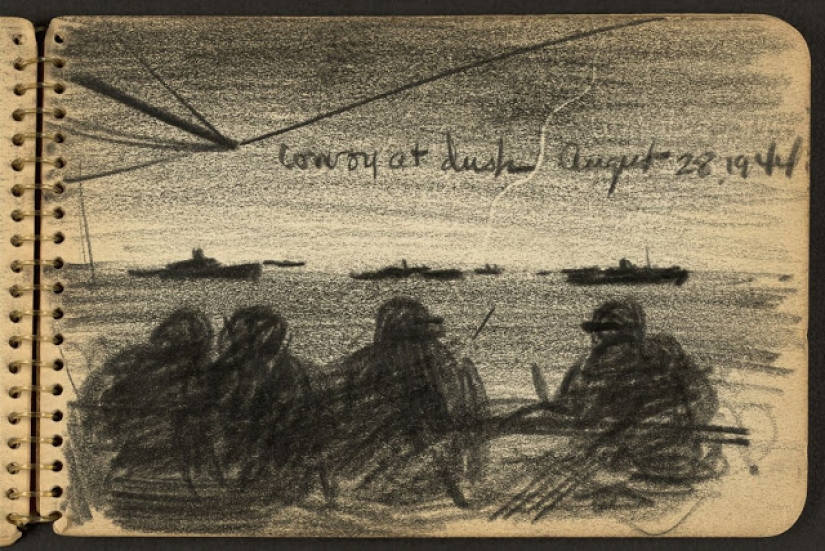
"Convoy at dusk."
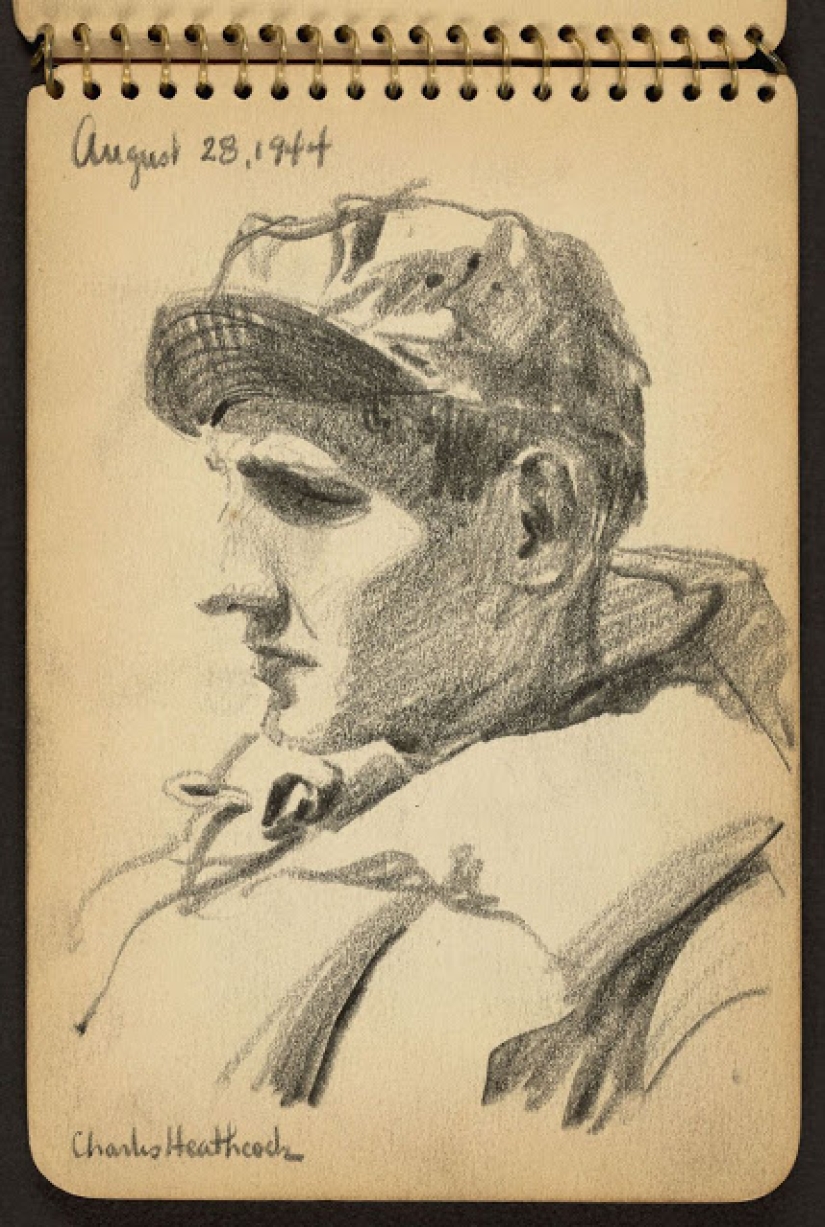
The caption to the portrait: "Charles Heathcock".
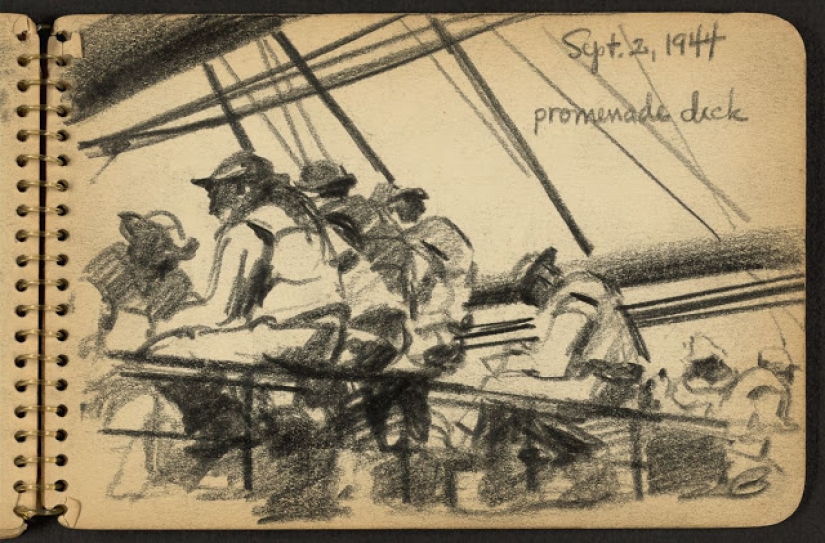
"On deck."
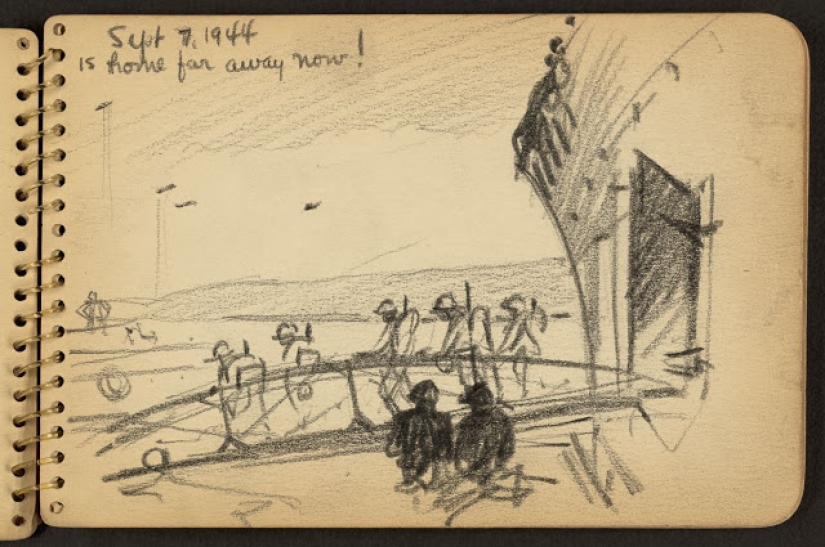
"How far we are from home now!", September 7, 1944.
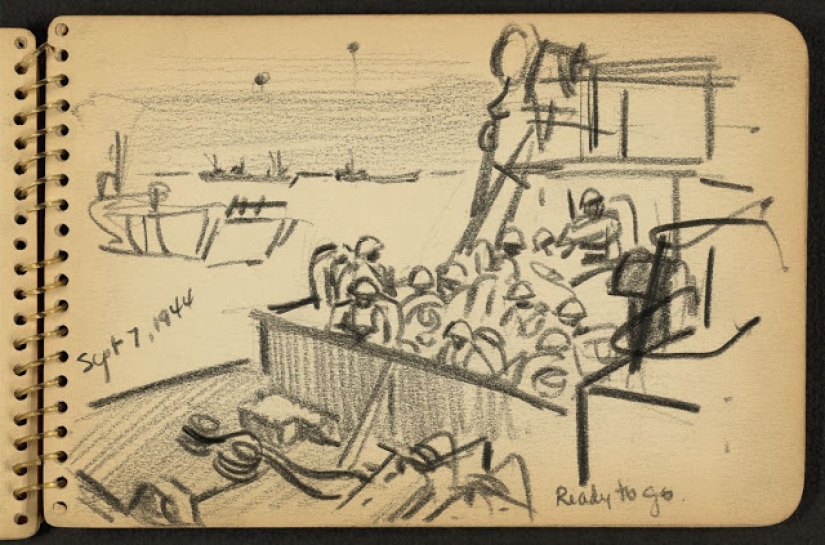
"Ready."
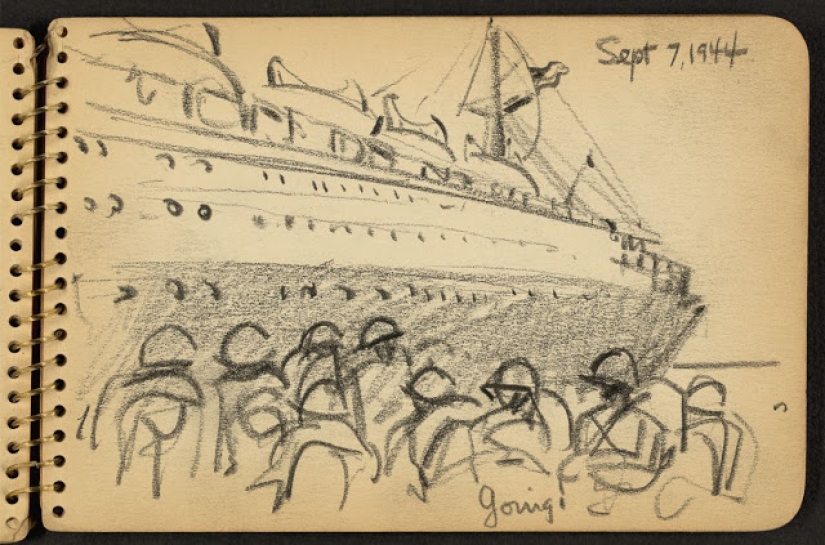
"Moved out."
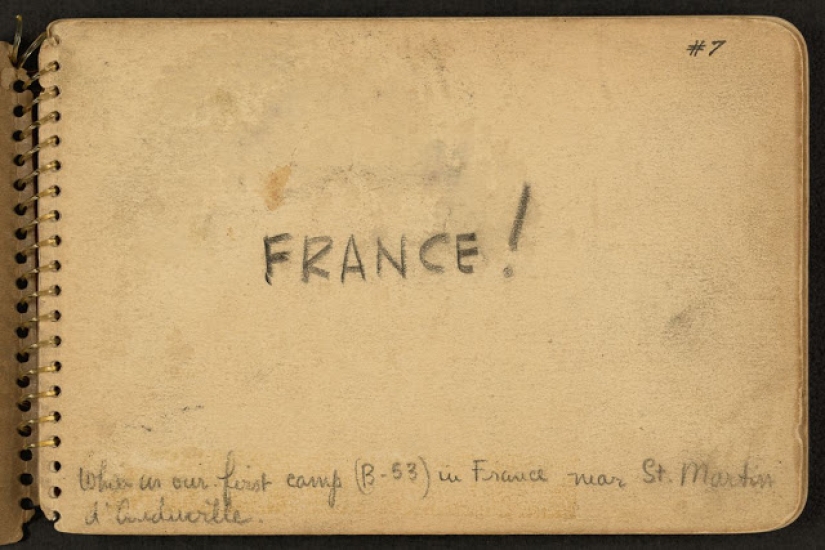
"France!"
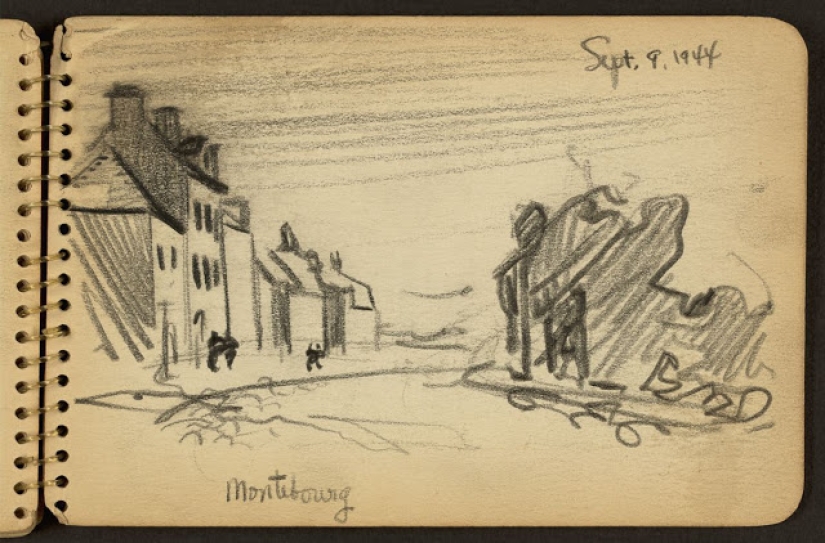
Montebourg, September 9, 1944.
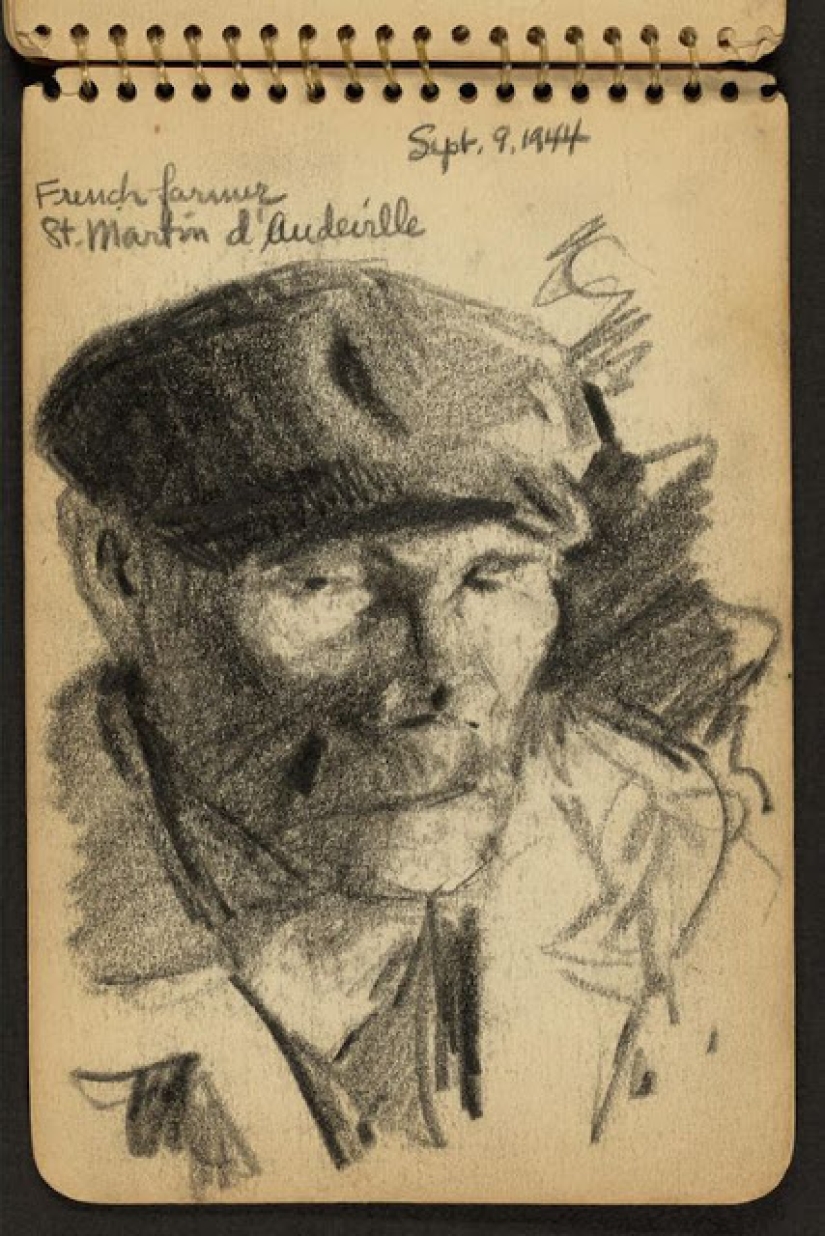
"The French farmer."
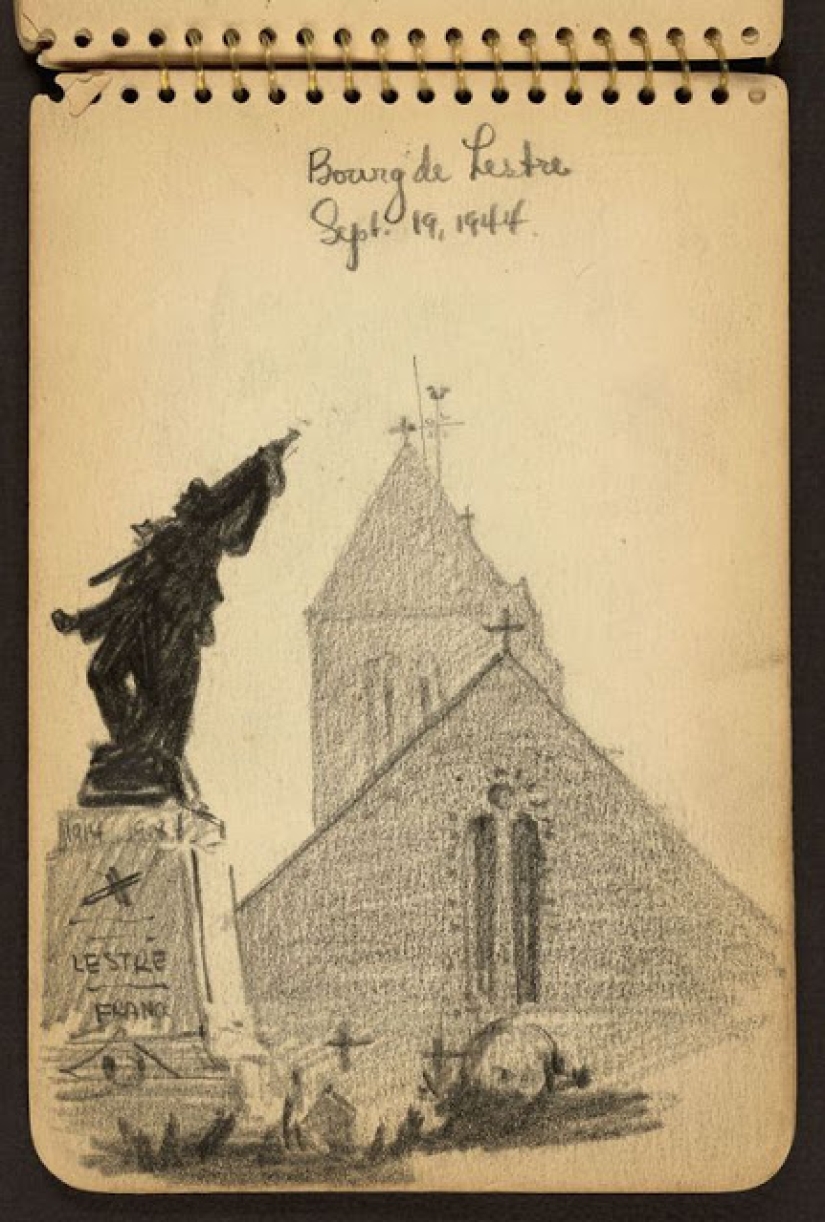
Leicester, September 19, 1944.
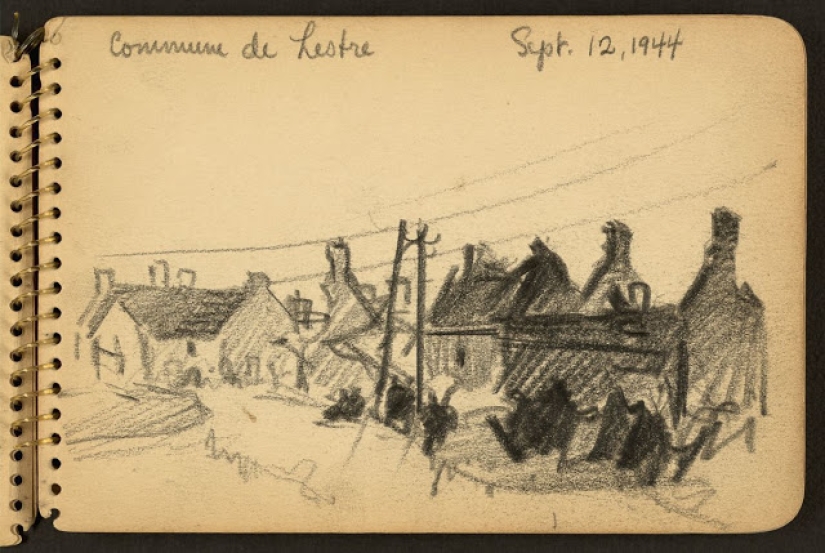
"The Commune of Leicester".
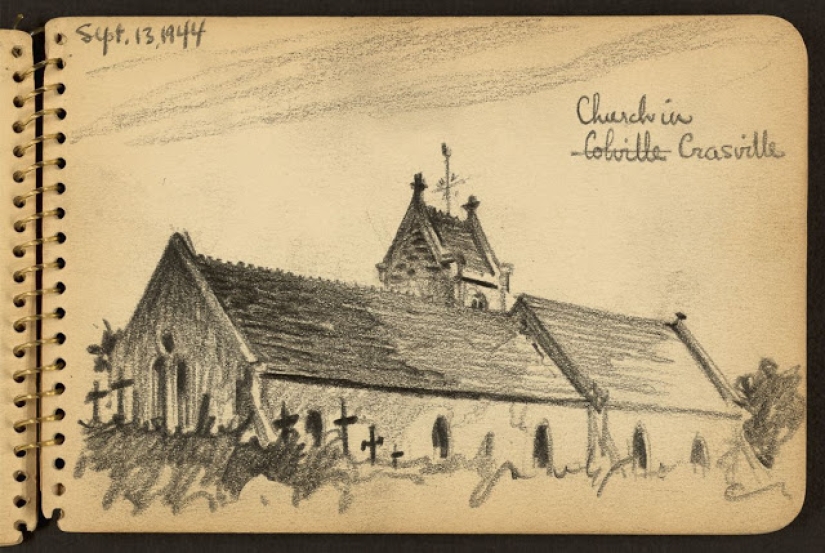
"The Church in Kravila".
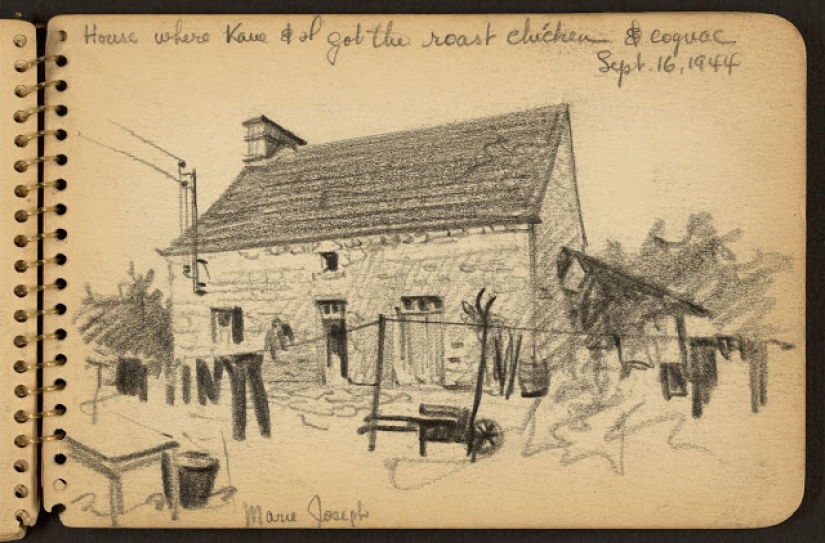
"The house where Kane and I were treated to fried chicken and cognac."
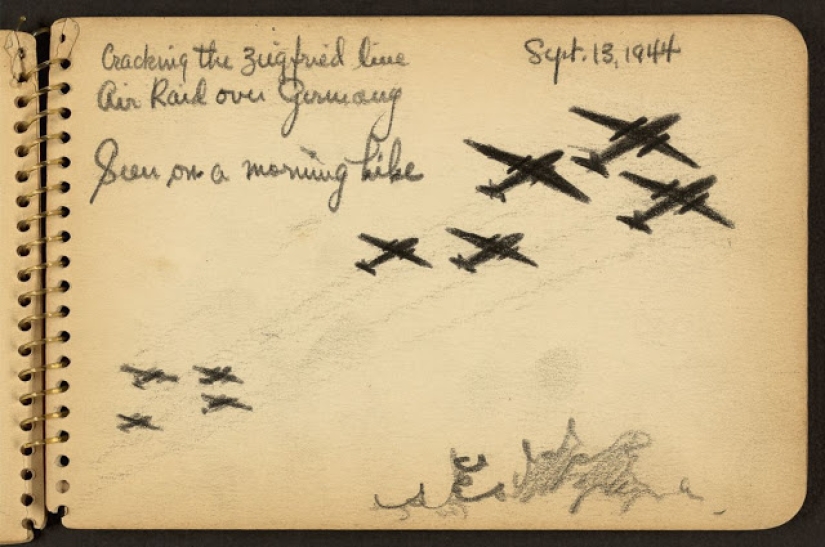
"Shelling of the Siegfried line, an air raid against Germany."
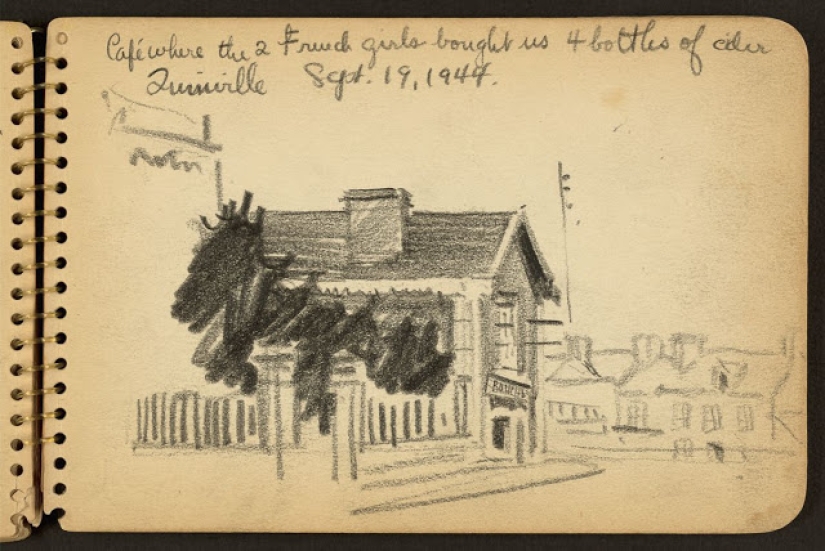
"A cafe where two French girls bought us 4 bottles of cider."
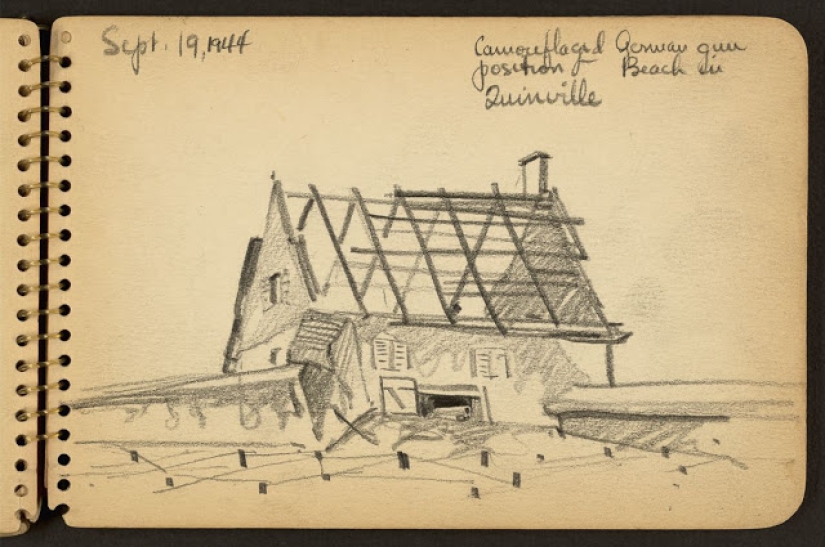
On the beach of Luneville.
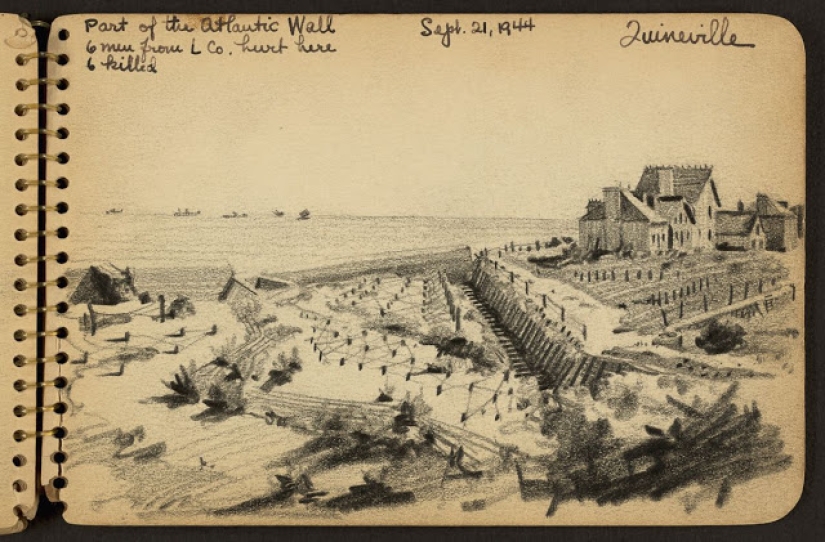
Part of the Atlantic Rampart built by the German Army.
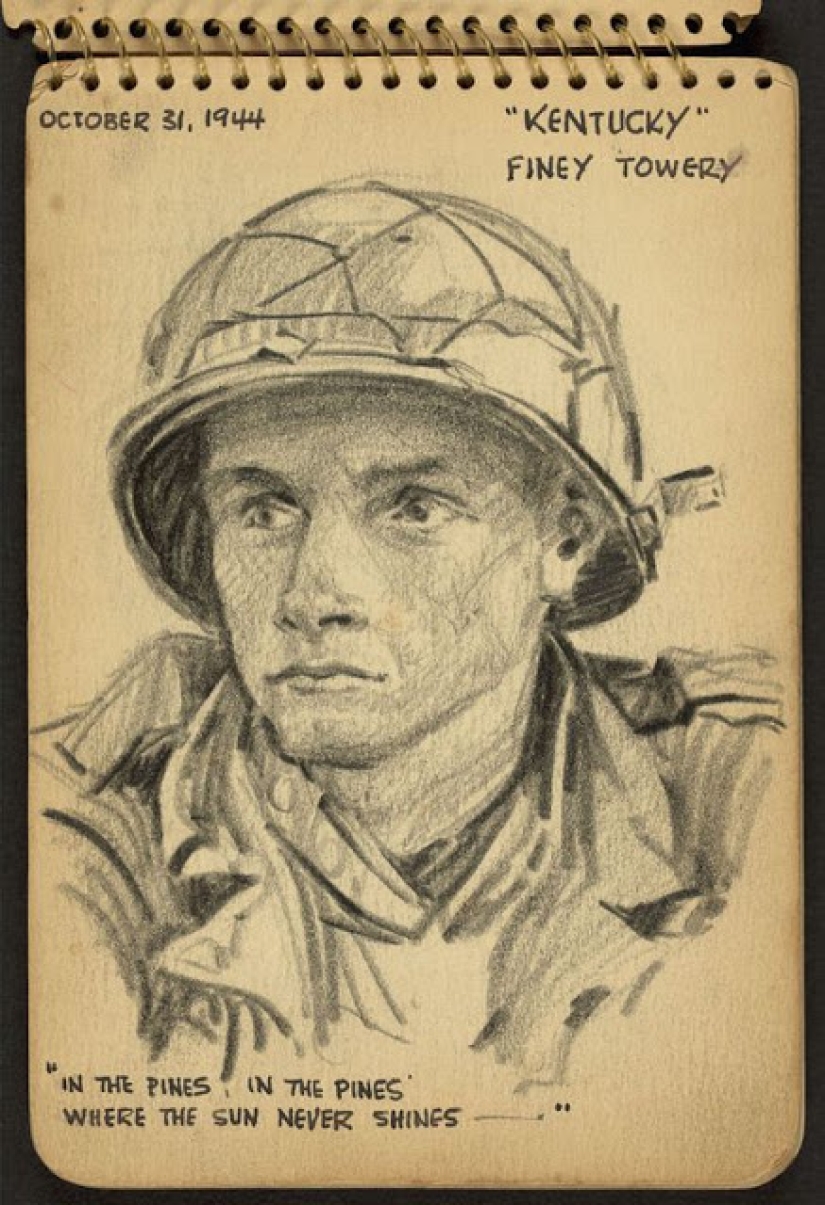
The caption to the portrait: "Kentucky Fine Tower." In the lower left corner are the words from the American folk song "Where did you sleep last night?".
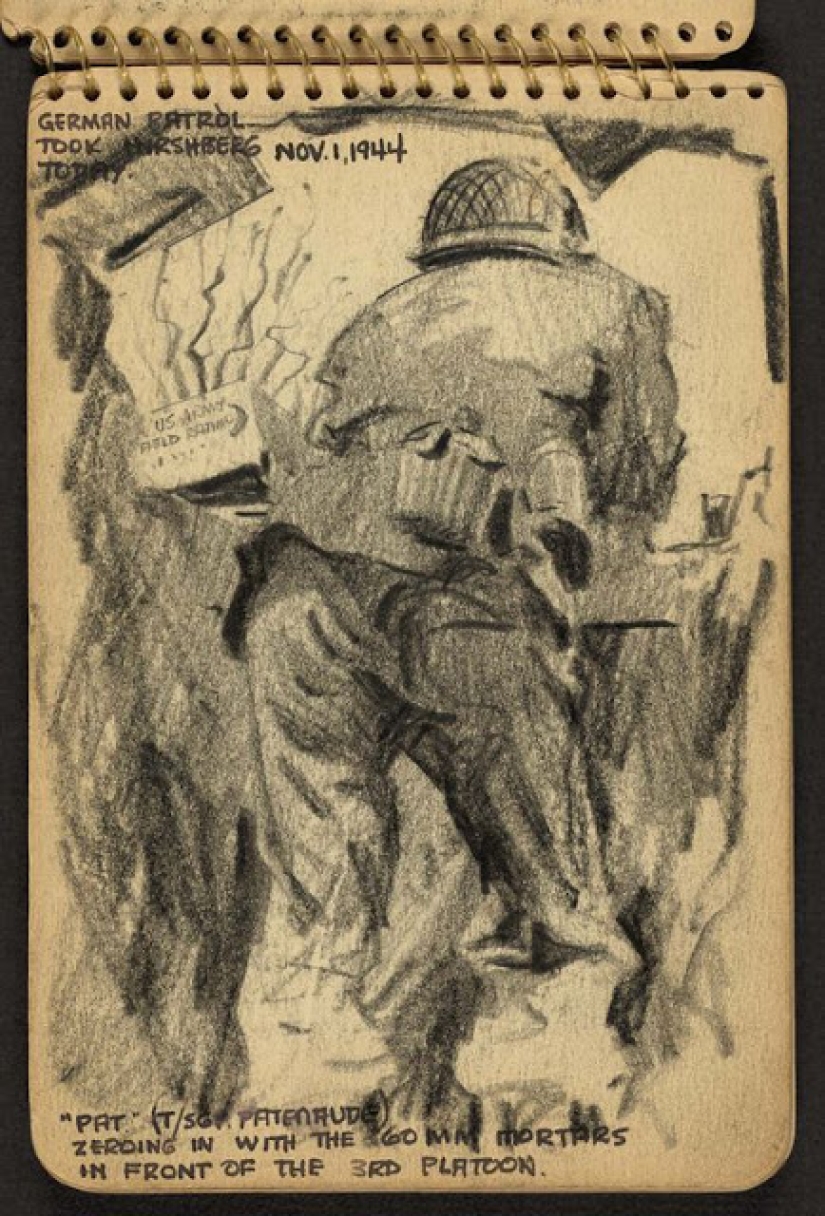
German patrol.
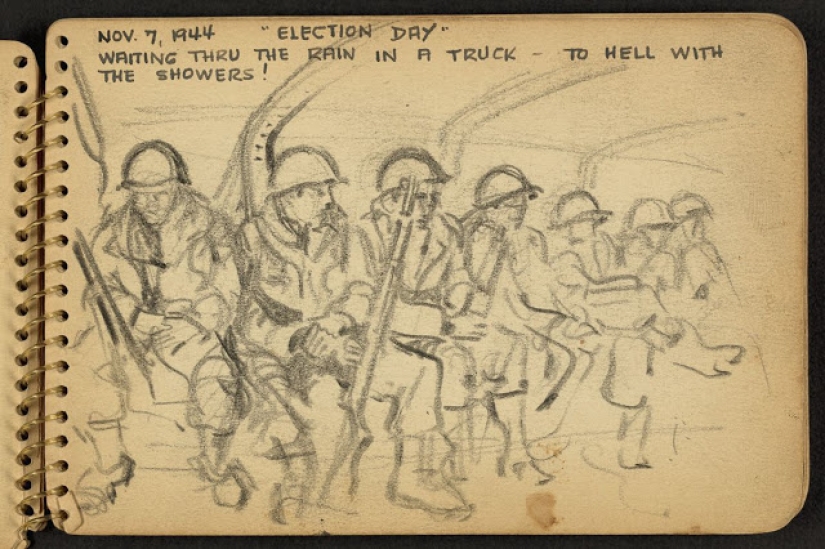
Soldiers sit in a truck in the rain, November 7, 1944.
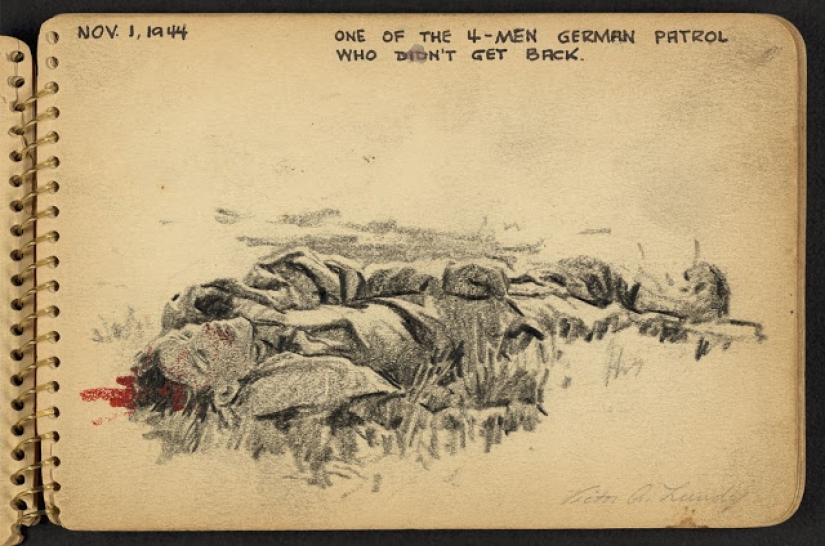
A dead soldier from a German patrol, November 1, 1944.
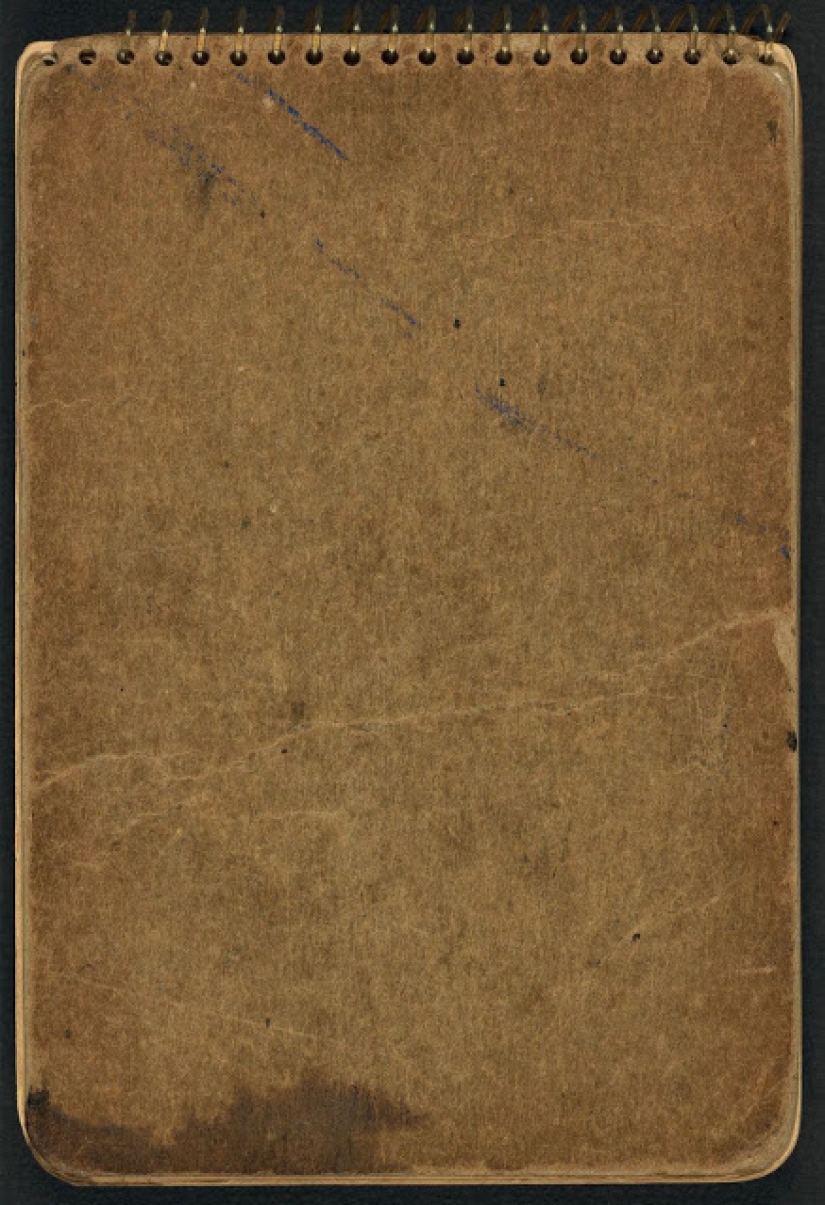
Keywords: Architect | World War II | Sketches | Drawings | Soldier | Artist
Post News ArticleRecent articles

Most of us think that the color of the eggshell does not play any role and it is possible not to pay attention. But it's not and ...

The more we rely on technology, the more potential power hackers gain over us. It doesn't matter if their goal is to help or cause ...
Related articles

General Dmitry Karbyshev — one of the Soviet commanders who performed his duty to the end. This man was captured in the battle, ...

The name of Boris Skosyrev is not very familiar in our country, but in Europe this man was remembered very well. This energetic and ...

Anyone familiar with the colorful London phone booth. They are the traditional symbols of the UK along with double-Decker buses and ...

Creating a good portrait is one of the most difficult tasks for any photographer. In order to make a really natural and memorable ...